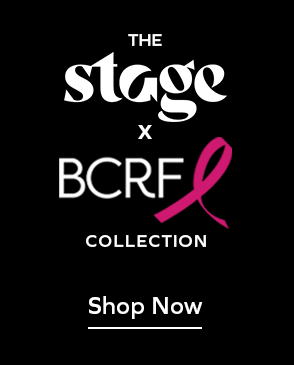Eating better post-cancer diagnosis is a no-brainer: we all want to improve our health and longevity. That said, eating right doesn’t mean food has to be boring and tasteless.
While refined sugars, processed foods, and too much meat should fall to the wayside most of the time — the occasional burger, slice of cake, or glass of wine will not trigger immediate recurrence — there are plenty of ways to swap out the “bad” with something “good.”
As someone who’s been eating refined sugar-free, gluten-free (I have celiac disease), and meat-free more or less for the past twenty years, I have a few tricks up my sleeves. Since my cancer diagnosis, I’ve become even more careful about what I eat, adding foods that are purported to cause cancer cell apoptosis, or cancer cell suicide, and even more antioxidant-rich foods to my mostly plant-based diet. (I do eat fish occasionally.)
When my blood work kept coming back a bit off a couple of years after I finished treatment, the gastroenterologist for my celiac disease suggested I see if there might be certain other foods triggering my immune system, so she had some tests run and it turns out I’m allergic to garlic and my immune system hates all forms of dairy, so I had to cut both, Italian food and goat cheese be damned. I hated it, but I’ve learned to use shallots and onions instead of garlic and
I’m now an expert almond and walnut milk maker. The lack of cheese in my life still hurts my soul, but at least my blood work is back to normal and my stomach is less angry in general. It was worth finding out the root of my issues… and making the change. Inflammation is not our friend.
Hopefully, your bloodwork is excellent and you need not eliminate anything more than the necessary junk. Adding healthy choices is easier than getting rid of the stuff we love, but here I will share some of my favorite healthy recipes that include some of the key ingredients we should all be eating:
- Cruciferous vegetables
- Flaxseed
- Certain mushrooms
- Almonds
- Berries
- Seaweed
- Spirulina
Below is my favorite kale recipe, which also happens to incorporate maitake mushrooms; two foods that help support your health and body during cancer treatment and beyond. Kale can be exchanged for any variety of kale or other dark leafy greens, like collard greens, swiss chard, beet greens, dandelion greens, spinach, or a mix greens–any of them are great cancer fighting foods.
Before the recipe, you’ll find an explanation of why each ingredient is our friend… Enjoy!
Kale
Kale is a dark, leafy green that falls under the cruciferous umbrella. Cruciferous veggies contain compounds called glucosinolates that help decrease inflammation. Research suggests they may also consist of compounds that suppress tumors and encourage apoptosis.
Among other praiseworthy attributes, kale also contains vitamin A (great for bone health and your immune system), vitamin C (immunity and chronic disease prevention), vitamin K (helps with blood-clotting if you bruise easily), and folate (a B vitamin that’s good for your brain).
Maitake Mushrooms
Maitake mushrooms, also known as hen-of-the-wood, are my favorite fungi. They are meaty (I hate that word!), and satisfying, though low in calories. They readily absorb flavor and unlike some mushrooms, have a taste of their own, which veers towards “earthy.”
According to the integrative medicine portion of Sloan Kettering’s website, “laboratory studies and small uncontrolled studies in humans show that maitake extracts slow the growth of tumors and stimulate certain immune cells.”
Shallots
Shallots are high in antioxidants and promote circulation (heart health). They are also high in quercetin, a flavonoid that helps your body manage seasonal allergies (itchy eyes and runny nose). This recipe also works well with garlic, another amazing antioxidant, and inflammation killer (if you aren't allergic like me!). Shallots tend to be less robust and a tad sweeter than onions.
Olive Oil
Olive oil is a monounsaturated (good!) fat. It mainly consists of oleic acid, a fat that helps combat inflammation. It’s also an antioxidant, which basically means it helps protect your cells from oxidation, which can turn a healthy cell into a tumor cell. This oil is heart-healthy and may help prevent strokes.
Smothered Kale and Maitake Mushrooms
- 1 bunch of kale (I typically use curly green, but you can also use lacinato or red kale)
- 1 medium shallot
- 8oz (two packages) Maitake mushrooms
- 2 Tbsp olive oil (or more)
- Sherry or balsamic vinegar to deglaze the pan
- Salt and pepper to taste
Wash and de-stem kale, tearing leaves as you go. Thinly slice the shallots.
Use a wet paper towel to gently wipe mushrooms, cutting larger mushrooms as necessary.
In a large saucepan, heat oil over a medium-high flame. You will need a lid that is smaller than the circumference of your pan so it will fit inside the pan to “smother” the kale and mushrooms.
When oil is hot, add shallots and mushrooms, stir to coat with oil, cover with a smaller pan lid, and leave to cook for 7 minutes, stirring only once halfway through.
Add Kale. Mix kale with mushroom and shallots (I usually use cooking tongs to do this), cover with top, and smother for another 1 to 2 minutes.
Use sherry vinegar to deglaze the pan.
Add salt and pepper
Enjoy! I find this usually serves two people.
For more nutrition and diet tips, read our Breast Cancer Diet Basics article.





Leave a comment